 Kerman (in Persian: كرمان, also Romanized as Kermān and Kirman; also known as Carmania) is a city in and capital of Kerman Province, Iran. At the 2011 census, its population was 621,374, in 171,389 families, being 12th most populous city in Iran at that time.
Kerman (in Persian: كرمان, also Romanized as Kermān and Kirman; also known as Carmania) is a city in and capital of Kerman Province, Iran. At the 2011 census, its population was 621,374, in 171,389 families, being 12th most populous city in Iran at that time.
It is the largest and most developed city in the Kerman Province and also the major city in South-East of Iran. It is one of the largest cities of Iran in terms of area. Kerman is famous for its long history and strong cultural heritage. The city is home to many historic mosques and Zoroastrian fire temples.
Kerman in the history of Iran:
Kerman is one of the five most important cities of ancient vast Iran. Geographers and historians have mentioned some other names for the city, such as “Karmania”, “Zharmania”, “Kermania”, “Kariman”, “Karmani” and “Boutia”.
Why it was named “Kerman”? Ibn al-Kalbi says: ‘It got the name of Kerman son of Falluj, the grand son of the prophet Noah, peace be upon him.’ Some others believed that Kerman was son of Fark bin Saam bin the prophet Noah, peace be upon him; as he settled in the area when the languages increased, so it was named “Kerman”.
Kerman after the Islamic conquest:
The Muslim historians stated that “Kerman”, “Sistan”, “Makran” (Baluchistan) and “Esfahan” were conquered in 23 Hijri (644).
According “Al-Kamel Fit-Tarikh”, Sohayl bin A’di and Abdullah bin Abdullah bin U’tban brought their corps to battle the enemy; they conquered Kerman by the help of Sohayl An-Nusayr bin A’mr.
“Al-Madaeni” believes that the conqueror of Kerman was “Abdullah bin Badil bin Warqa al-Khazaai” who included Kerman into Islamic caliphate in the era of Omar bin Khattab, may Allah be pleased with him. Following that, the neighboring regions, Bam, Jeeroft and Sirjan, were conquered by Mojashe’ bin Masoud and Rabi’ bin Ziad.
Kerman; the city of mosques:
After the Islamic conquest, Kerman was altered to a very crucial civilized city in the East Islamic region. Kerman was the capital of many dynasties got roots in the region; for example the dynasty of Aal-e-Mudhaffar in the eighth Hijri century (1400s). While Turkish Seljukian kings uprooted many Bateniah along with some other astray groups in the Muslim world. They defended Islamic territories from many foreign invasions.
Kerman was full of mosques and Islamic seminaries; it became a strong castle of Ahl-us-Sunnah like other Iranian cities, Nishabur, Esfahan and Shiraz, as a generation of expert scholars graduated in Kerman.
Some outstanding and safe ancient mosques in Kerman are listed as following:
The Grand Mosque:
It was established 150 years before the dominance of the oppressive fanatic Safavids. This mosque is popular by the name of “Masjid-e-Jaame’ Modhaffari”. The Grand Mosque was attacked by “Agha Muhammad Khan Ghajar”, the founder of Ghajari dynasty where it was damaged partly. This mosque is counted as a great sign of the Islamic architecture which was built in the eighth century.
Malek Grand Mosque:
This mosque was constructed in the era of Seljukian rule. It is known as the first mega grand mosque of Kerman. The mosque was a seminary as well for teaching Islamic knowledge and Shari’ah, people’s gathering and conciliation among them.
Khwaja Khedhr Mosque:
This old mosque is located in the “Khwaja Khedhr” area in the city. It was built in the early years of the seventh Hijri century (1300s). It was destroyed in 1982’s earthquake partly. It needs rebuilding and reformation.
Bamanar Mosque:
Masjid-e-Bamanar was established in the 8th Hijri century as well. Its founder is E’mad-ud-Deen Sultan Mahmoud, brother of Shah Shujaa, one of the Muzaffarid kings ruled over that region in the 8th century (1400s).
Ganjali Khan Mosque:
It is the first mosque that was constructed by Safavid rulers for propagation of their wrong tenets. Then Ghajaris built another mosque, Masjid-e-Chehlsetoun, after massacring Sunni Muslims in the region.
The post-Safavid dynasty, Ghajari rulers, carried out stringent oppressions against Sunnis to make Kerman free of Sunni Muslims. Aggressive Safavid rulers occupied all the mosques which were founded by Sunni regimes.
Famous dignitaries of Kerman:
Kerman and its neighboring villages provided the Muslim community a sincere generation of geniuses; they had influence in the social, political, cultural and academic aspects in vast ancient Iran. Some of these dignitaries as following:
Abul-Fadhl Kermani:
Abd-ur-Rahman bin Mohammad bin Amirwayh, Abul-Fadhl Kermani was a Hanafi jurist (Faqih). He authored many books, such as “At-Tajrid fil-Fiqh”, “Al-Eedhah fi Sharh At-Tajrid”, “Sharh-ul-Jame’ al-Kabir and Fatawa”.
He was born in Kerman and passed away in “Marv” in 543 Hijri (1148).
Abu-Muhammad Harb bin Ismaeel al-Kermani:
He was a famous jurist who made many academic trips to seek knowledge from great geniuses of his time. He studied at Ahmad bin Hanbal, Abul-Walid Tayalasi, Abu-Bakr Humaidi, Abu Obaid, Saeed bin Mansour and Ishaq bin Rahwayh.
Many Hadith narrators trusted him in their narrations. His book “Masael” in two volumes is one of the most credible books of Hanbali madhab. He departed from this world in 280 Hijri (893).
Hassan bin Ibrahim bin Abdullah al-Kermani:
He was appointed judge of Kerman. Abu Hesham al-Anzi was born in 86 Hijri (705) who got knowledge from Tabi’een. He died in 186 Hijri (802).
He reported Hadith from Saeed bin Masrouq, his son Sofyan bin Saeed al-Thawri, A’asim al-Ahwal, Layth bin Abi Saleem, Ibn Ajlan, Zofar bin al-Huzail, Obaidullah bin Omar, Yousuf bin Abi Ishaq. While many other narrators trusted Hassan bin Ibrahim such as Hameed bin Masa’dah, Afghan, Obaidullah al-O’ayshi, Ahmad bin Abda, Azraq bin Ali, Ibn At-Tabba’, Dawoud bin Amr, Ali bin al-Madini, Ali bin Hajar, Muhammad bin Abi Yaquob al-Kermani and Ishaq bin Abi Israel.
Interpreter of Sahih Bukhari, Shams-ul-Aemmah al-Kermani:
He is Muhammad bin Yousuf bin Ali bin Saeed Shams-ud-Deen al-Kermani. He was an eminent jurist, skilled in Hadith, Tafseer, Osoul, Arabic grammar literary. Shams-ul-Aemmah al-Kermani was born in 717, 16 Jomadi al-Akhirah (1317-Sep-03) in Kerman. His demise took place on the path of Hajj in 16 Muharram, 786 Hijri (1384-March-18); his corpse was shifted to Baghdad.
Ibn Hajji said about him: “He spread his knowledge in Baghdad for 30 years, stayed for a period of time in Makkah where he wrote his famous book ‘Al-Kawakeb Ad-Darari Fi Sharh Sahih al-Bukhari’ in 25 small volumes. He has some other notable books as well in different subjects.
Abu Abdullah Muhammad bin Issa al-Mahani:
He is one of the ringmasters of math. He was born in 210 Hijri (825) in Mahan, a suburb of Kerman. He was very expert in geometry as well. There is a part of this subject known as Mahani Equation; it was discovered by him.
Shah Ne’matullah Wali:
“Shah Ne’matullah” bin Sayyid Abdullah bin Muhammad was contemporary with Taimour Gourkani. He was born in 731 Hijri (1330). He was a prominent poet and spiritual man. He has a collection of his ballades and quatrains. He lived and died in Mahan near Kerman city, 30 km away of Kerman. He passed away in 832 Hijri (1428); his grave is a popular shrine in the country.
Apart of the above-mentioned geniuses, Sayyid Shams-ud-Deen Muhammad bin Ibrahim Bami, was born in Bam city, the historian Abu Hamed Kermani, Shaikh Awhad-ud-Deen Kermani and Abu Ishaq Kouhbani also belonged to the same area.
Resistance of Kerman’s people before Safavids and Ghajaris:
When the Safavid dynasty was established in the northern areas of Iran, gradually their fighters assaulted central cities like Esfahan and Shiraz. They massacred people to change their sect. People in Kerman were also on the Sunni tenets; they did not want to change their beliefs and submit before Safavids’ discriminative rule. So they defended their city in the attacks of Safavids and Ghajaris.
Kerman was the first area that joined the anti-Safavid movement of “Mahmoud Ghaznavi”. They requested Mahmoud to prevent the raid of Safavids. As Mahmoud Afghan reached to Esfahan to fight with Safavid rulers.
Safavid and Ghajar crackdowns on Kerman:
Afghan revolutionaries and their Iranian Sunni allies faced failure in the first invasion; this defeat encouraged Safavids to practice all the tools of torture on the people in Kerman region. The second attack of Afghans was ended up with the overthrow of Safavids in Esfahan. A new era was begun by the rule of Afshaari and Zandi dynasties who were less oppressive than Safavids.
The worst days came when Agha Muhammad Khan Ghajar (1742–1797), the Qajar dynast, entered Kerman after a long-term siege of the city. He ordered his troops to shoot all citizens brutally. According “History of Kerman”, Qajar asked his heartless men to make a tump from the scooping eyes of people in front of him. About twenty thousands eyes were trenched by Qajaris in Kerman.
Qajar was so savage to Kermanis because they had considered Qajar dynasty the followers of Safavids in ferocity. The brave nation decided to resist Ghajar as they did in the case of barbaric Safavid. Ghajaris were Anatolian Kizilbas who were carrying the same aversion for the Iranian nation particularly with Sunni Muslims. Ghajaris were battling under the flag of Safavids as well.
As a result, people witnessed an unbearable bad economic and political situation; many families left their homeland settling in the neighboring areas and countries.
Today’s Kerman:
Kerman is one of the major cities in Iran. There is a considerable Sunni community in the city; most of them are Baloch Sunnis who have migrated from the south of Kerman province, Narmashir, and Baluchistan region in the recent years. But they have no own grand mosques to offer prayers in congregation and educate their children in seminaries; it is the case with other Sunni communities in the Iranian metropolises.
SunniOnline.us



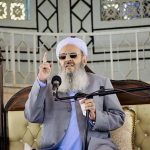
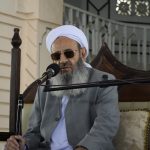

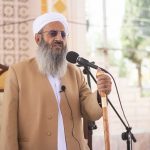
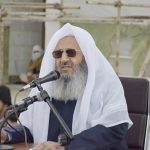
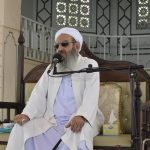
Comments